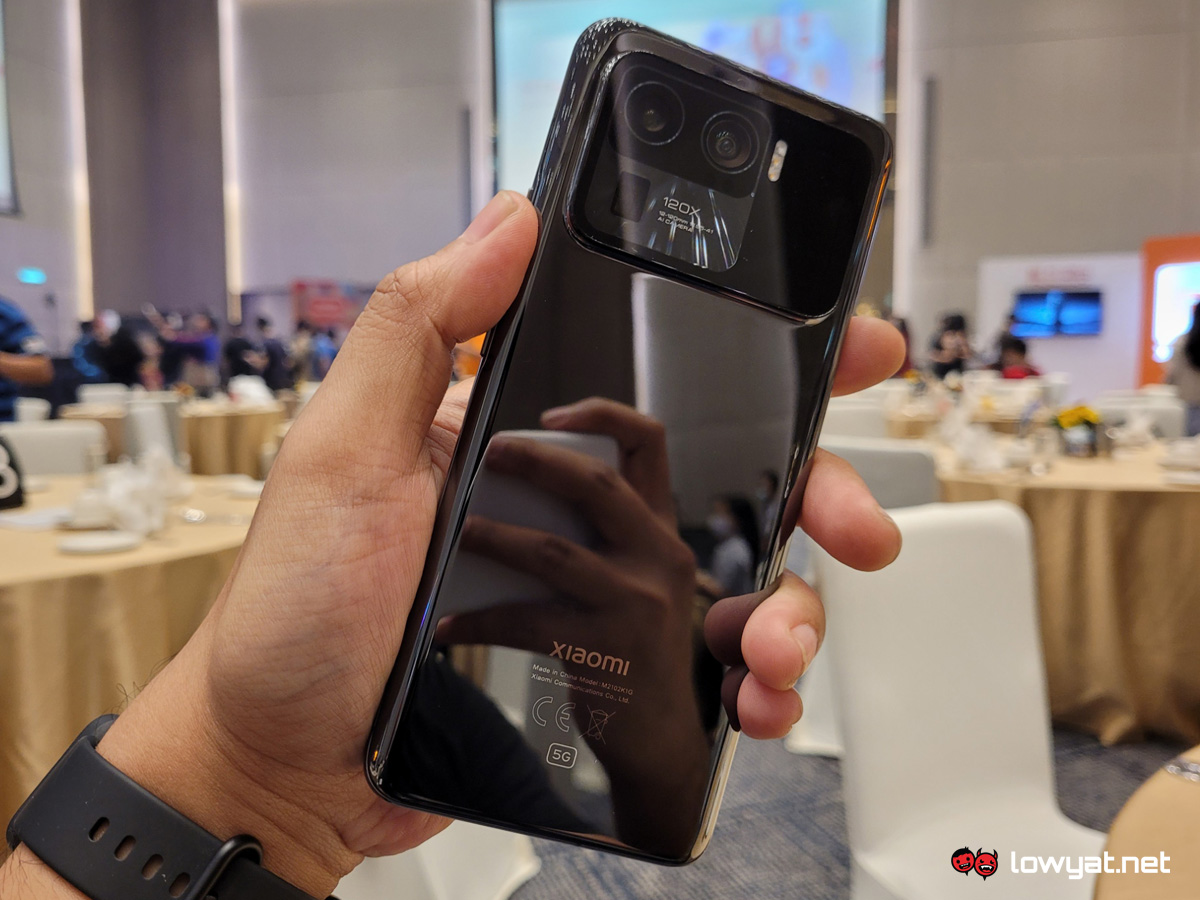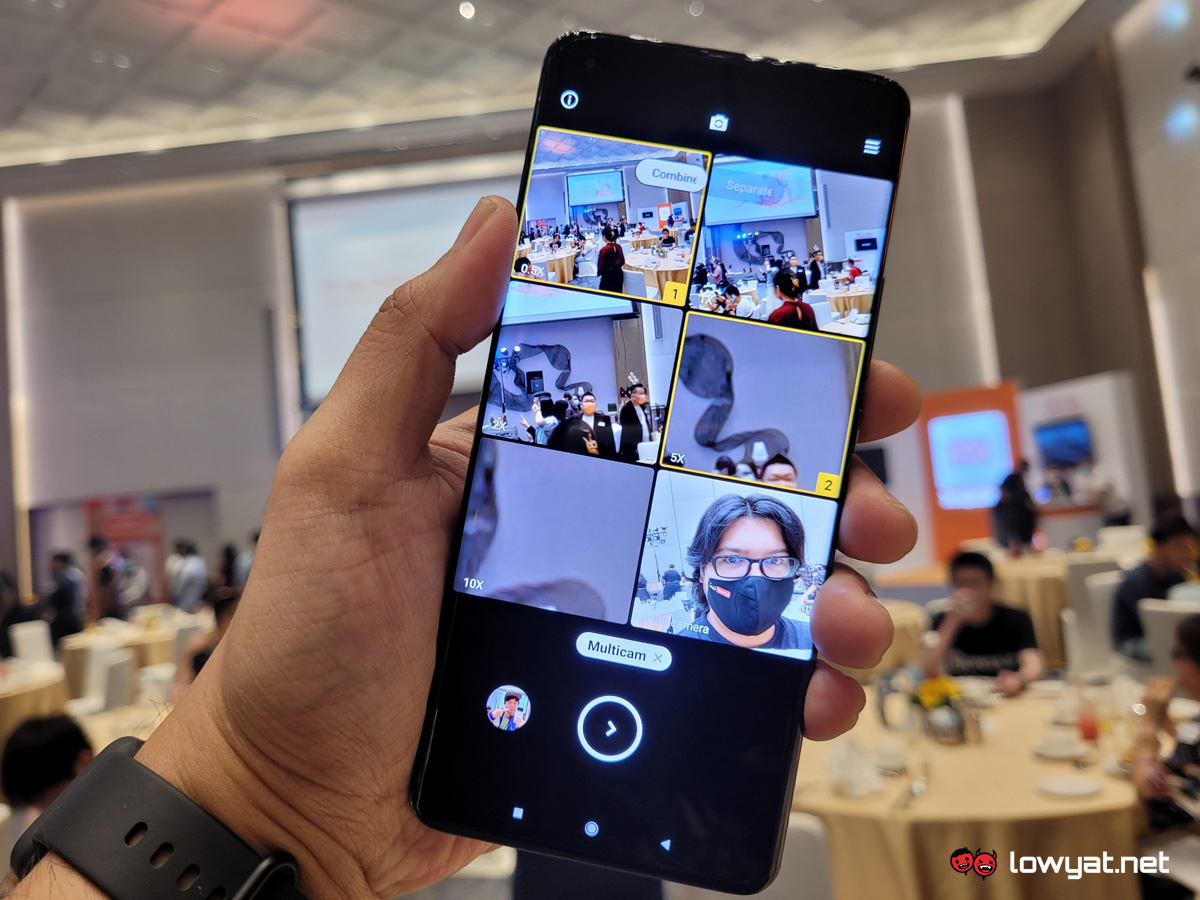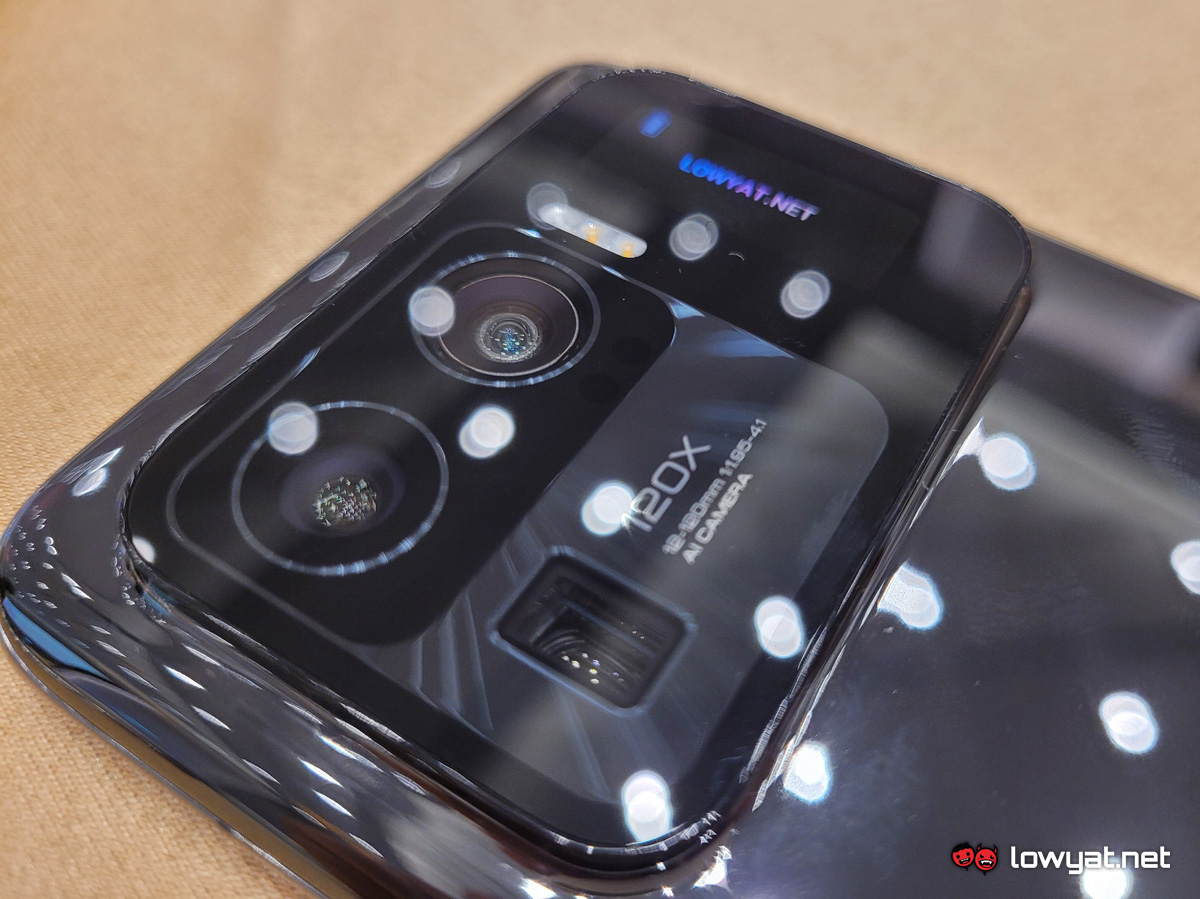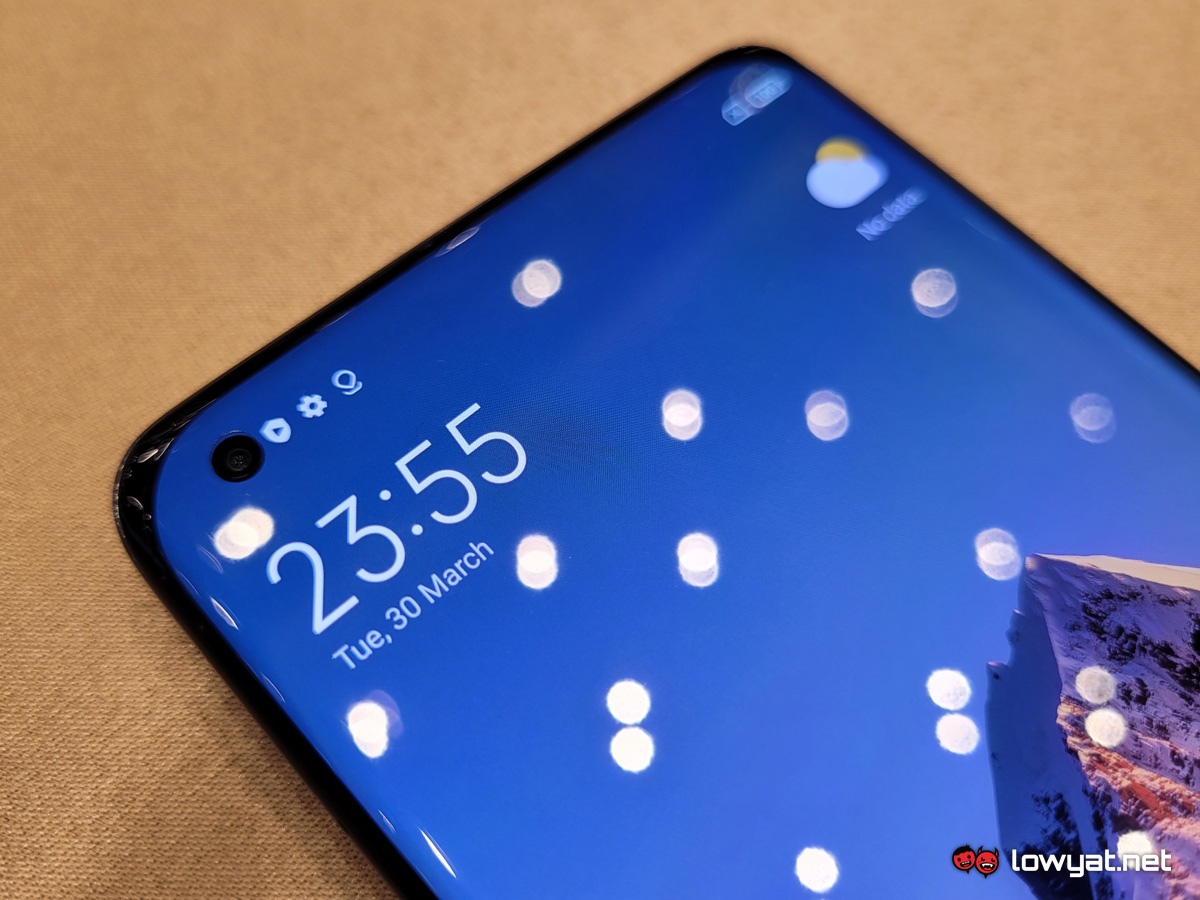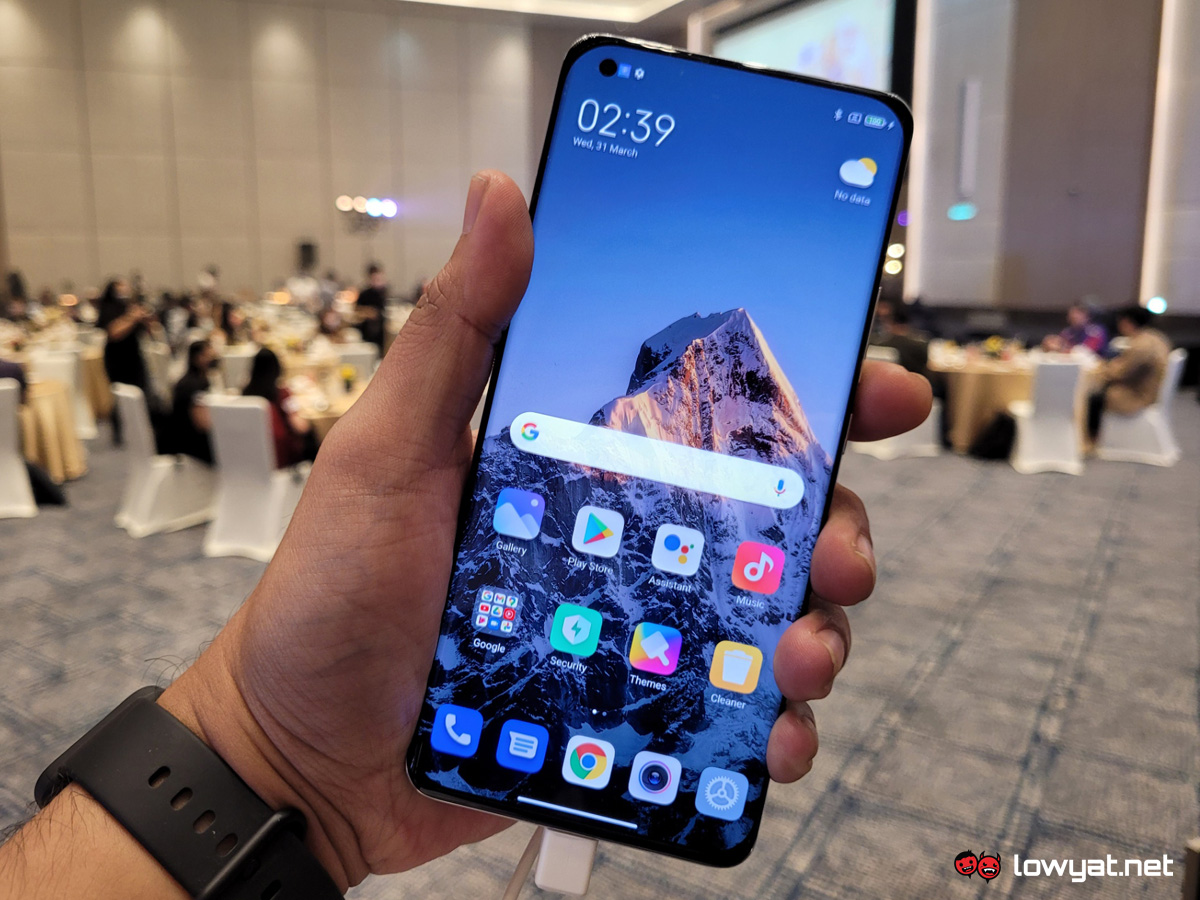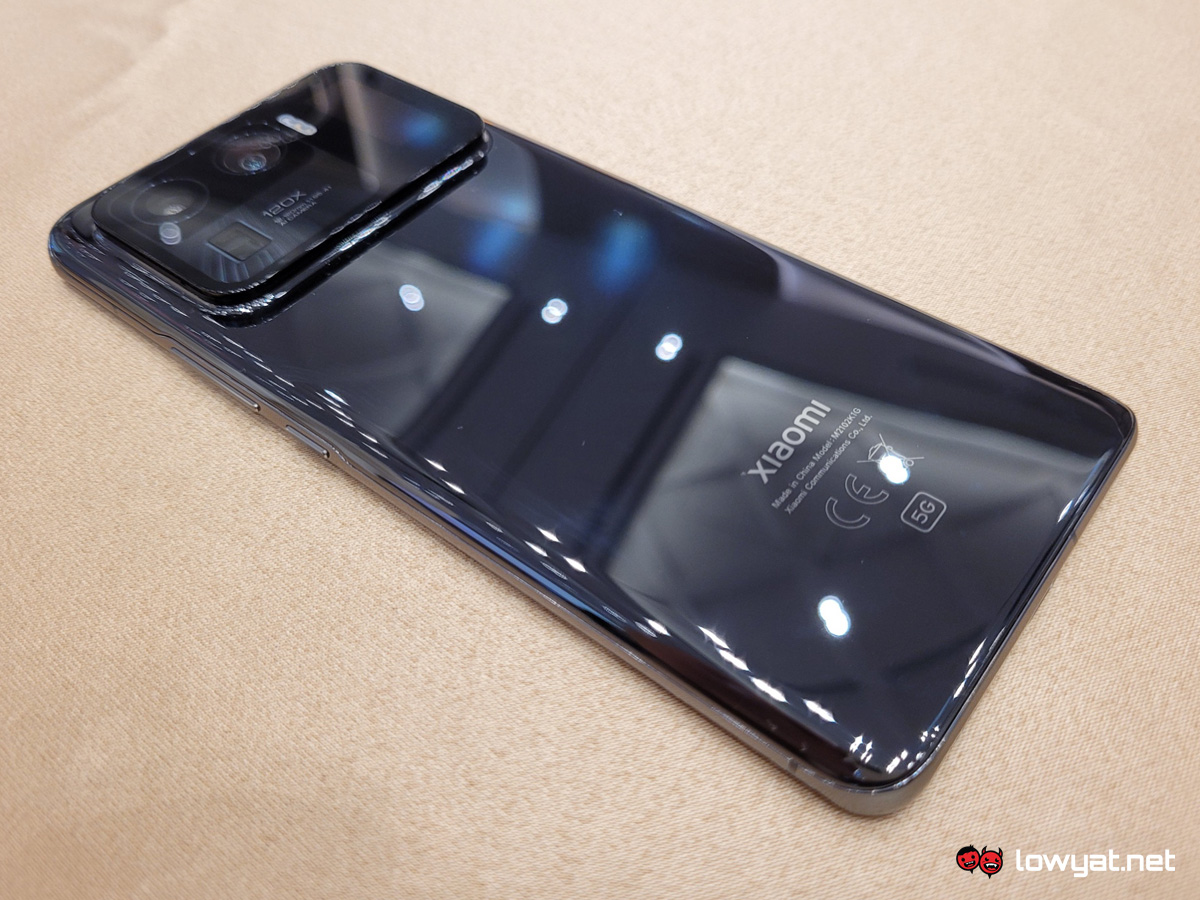From there, it’s quite apparent that Xiaomi really wants users to fully capitalise all of the phone’s rear cameras for regular use, selfies and even vlogging – for good reason too. On its back is an impressive assortment of cameras which consists of a 50MP Samsung ISOCELL GN2 main sensor, and two 48MP Sony IMX586 sensors for its telemacro and ultra-wide cameras.
Keep in mind that the onboard 50MP sensor itself is physically larger than the 108MP ones found in the phone’s siblings, which in turn comes with bigger pixel sizes that allows for better detail capture and low-light performance. Needless to say, you can expect to produce top-tier imaging with the Xiaomi Mi 11 Ultra, especially for your selfies. Also not forgetting that you can fully take advantage of the onboard ultra-wide camera for groupfies and scenic self-portraits. Finally, there’s also the telephoto which is able to zoom in up to 5x optically and 120x digitally, but its intended use is quite particular so whether you want to use it for selfies – which is weird, nonetheless – is entirely up to you.
Besides being used as a viewfinder, the rear secondary screen can be utilised for other purposes and is fully customisable to a user’s preference. On default, the display functions as a clock but – as mentioned earlier – you can personalise it to display other information, images, graphics, and even custom text. Alerts such as calls and message notifications are also displayed here – notably, a quality-of-life feature rarely found on any other smartphone.
Despite allowing you to capture selfies in greater quality via its rear cameras, the Mi 11 Ultra still features a front-facing camera for the more traditional approach. Housed within a punch-hole cutout on its curved 6.81-inch 2K AMOLED display with 120Hz refresh rate is a 20MP camera. Sure, it lacks the “oomph” of the rear 50MP sensor, but it’s there for the sake of convenience if you need it.
Unfortunately, my hands-on experience with the Xiaomi Mi 11 Ultra was quite brief, so I was unable to fully evaluate its performance. Regardless, it was fast and responsive in terms of interface navigation, app launching, as well as even capturing and processing images in full 50MP resolution. To quickly recap on its specs, the phone is equipped with the flagship Qualcomm Snapdragon 888 chipset, 12GB of RAM, 256GB of internal storage, and a 5,000mAh battery with 67W fast charging support for both wired and wireless approaches.
Design-wise, the Mi 11 Ultra is definitely a premium flagship smartphone and it isn’t shy of letting everyone know of that fact. This is thanks to its large curved display with high screen-to-body ratio, ceramic rear case and, of course, its massive rear camera array with a secondary screen. Strangely enough, holding it in hand did remind me of last year’s Samsung Galaxy S20 Ultra in terms of feel and weight. That being said, the Xiaomi phone is considerably hefty, but that’s to be expected given the amount of tech onboard.
My first impression of the Xiaomi Mi 11 Ultra has been positive so far, especially in terms of its imaging capabilities. However, I’ll reserve my evaluation of its camera and overall hardware performance for a more in-depth review in the near future, so do look forward to it. Just in case you missed our previous report, this top-of-the-line Xiaomi flagship smartphone is expected to arrive in Malaysia later this month on 23 April, and is priced at RM4,299. Those interested can pre-order it now from the brand’s official stores on Lazada and Shopee starting today.
